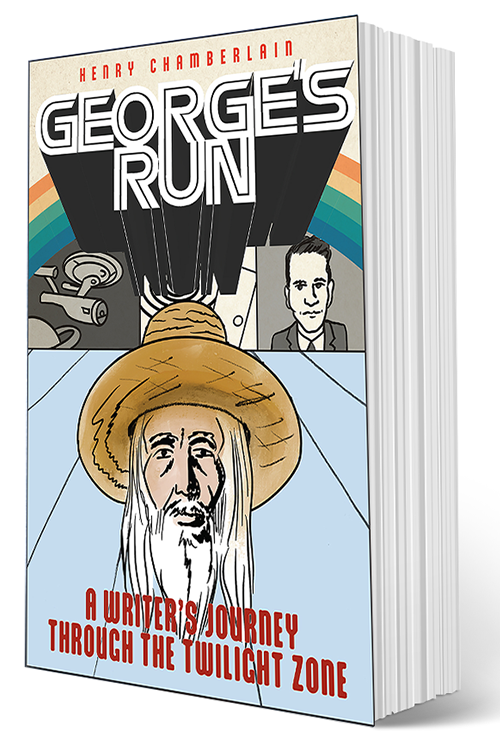
TWISTED DARK, Cover art by Caspar Wijngaard
TWISTED DARK, published by TPub Comics, has the face of a battered woman as its brand and permanent logo. The story of a woman who wants to be beaten by a man is the flagship story to its TWISTED DARK universe. What to say on this? Where to begin? This logo has been around for many years now. I suspect that a lot of people who have actually bought the comic have not actually read the comic. That would partly explain how this has remained under the radar.
How about #NoAbuseToWomenInComics as a response? I know, some comics fans would cry foul and bring up the old Comics Code Authority. I am not advocating censorship. Hey, I am willing to see what this series attempted to accomplish. The least that I can do is to bring it up here to your attention. The least that TPub Comics can do, moving forward, is place a sticker on such books that states, FOR MATURE READERS. Now, let’s see, I’d say that CREEPY magazine is pretty much the closest work I can compare this to in attempts at offbeat horror–but CREEPY never beat up on women. If you like gritty and grim, that is the audience that Neil Gibson, the creator, writer, and publisher, seeks to attract.
I’m getting quite a late start with this series, which recently ended with Volume 6. I can clearly see from the first volume that this is a collection of depictions of misery. This is not, by any stretch of the imagination, similar to The Twilight Zone or Black Mirror, as Mr. Gibson would hope for. That’s unfortunate. I can imagine how he would like to be associated with that but his work falls considerably short. Before I was even aware of the battered woman cover (as it is an extreme close-up) I went into reading this as I would any comic. As I progressed from one story to the next, I kept giving the book the benefit of the doubt. By the end, I found this to be not only dark and twisted–but misguided. Overall, I would say it is very misconceived. It may have been a case of persistence getting the better of good writing and judgement. I don’t enjoy saying this but that’s what I get from this. The solution is to phase out the false start and do a rebrand. There is potential there if corrections are made.

“A Lighter Note” Art by Heru Prasetyo Djalal
Here, you can see for yourself what is in this first volume. Each story involves a tale of dread and despair. There’s the story of a man who regularly asks his dead son for forgiveness for the way he abused him. Not exactly cheery, right? And it goes on from there getting more and more disturbing. There’s one story that begins with the compelling fact that we presently have more people living in slavery around the world than in any other time. I applaud bringing out that fact. The actual story is intriguing, if not depressing. It follows a man in utter poverty who rises to become an Islamic terrorist.

“The Pushman” Art by Jan Wijngaard
Another story about a failed life depicts a young Japanese man with crushed dreams of becoming an architect. Instead, he is a subway “pushman.” His job is to literally push crowds into subway cars to insure efficiency. However, this man, due to his troubled and frustrated existence, abuses the passengers by pushing and punching whoever he can.

“Munchausen’s Little Poxy” Art by Jan Wijngaard
The book rounds out with its final big story, “Munchausen’s Little Poxy.” All stories are written by Neil Gibson. Many of the stories, including this one, are illustrated by Jan Wijngaard. This is the story of Ulara, a troubled young woman facing issues of self-abuse. Ulara comes from a very wealthy family. It would stand to reason that Ulara would have, at some point, gotten the help she needed–with or without vast sums of money. Gibson paints a picture of a poor little rich girl who gets what’s coming to her since all her troubles are schemes to get attention. Her cutting is just a scheme. Her eating disorder is just a scheme. And so on down to her getting beat up by men. No one should feel sorry for Ulara since she deserves her pain. End of story. This is most assuredly not something that Rod Serling would ever have written. But it is a point of pride for Neil Gibson.
Neil Gibson’s overall motivation with his stories, to be generous, is to push limits. But simply pushing limits does not guarantee sound storytelling. His stories lack the perspective required for good horror. I think he has skill and I hope he learns from his mistakes. One of the challenging things about comics is that they take a considerably long time to create, especially at the scrappy indie level. So, it is possible for a misfit concept to power through to completion simply because too much effort has been put into it to abandon it. That certainly happens with the big publishers too but they can afford to cover one misstep after another, year after year. Indie publishers, all publishers, need to think twice about any project they undertake.
TPub Comics describes Twisted Dark as “a series of interconnected psychological thrillers, perfect for fans of twist endings and comics that reveal more on the second reading. Each story stands alone, but the more you read, the more connections you see between the characters.” I’m not here to burst anyone’s bubble. But, fair is fair, a closer look does not favor this work. Some high profile reviewers, and even a celebrity or two, have supported this series–but I seriously doubt they gave it a close reading, if any. Clearly, TPub Comics is persistent and maintains a presence at comic book conventions. There was a YouTube video that featured Bleeding Cool’s Richard Johnston somewhat praising TPub and TWISTED DARK for its tenacity, albeit in his own distinctive mocking tone. “They challenge you to ignore them!” How about this: Now is the time to look inward. Mr. Gibson, please place stickers on your remaining stock that read FOR MATURE READERS. Or, better yet, just trash the rest of your stock. Whatever you have to do, for the sake of your business and your own karma, get rid of those hateful banners featuring a battered woman as soon as possible. I am offering you sound advice. And, in case you may not be sure what I’m referring to, here is a sample of one of these banners with you standing in front of it:

Neil Gibson from T Publications standing in front of a banner of a battered woman who, in the comic, is “asking for it.”
So, maybe you should visit TPub Comics and let them know what you think.
Like this:
Like Loading...











































